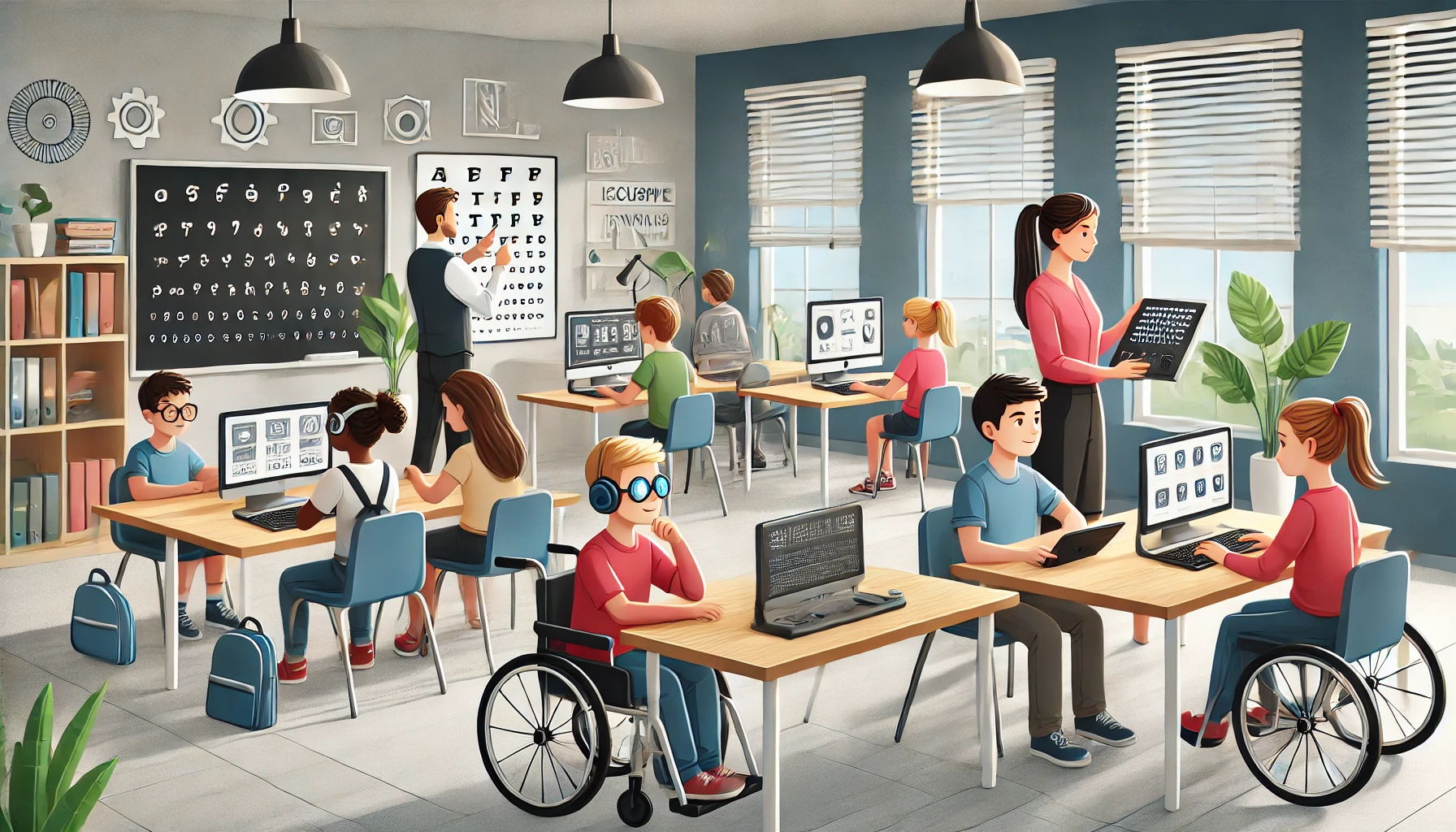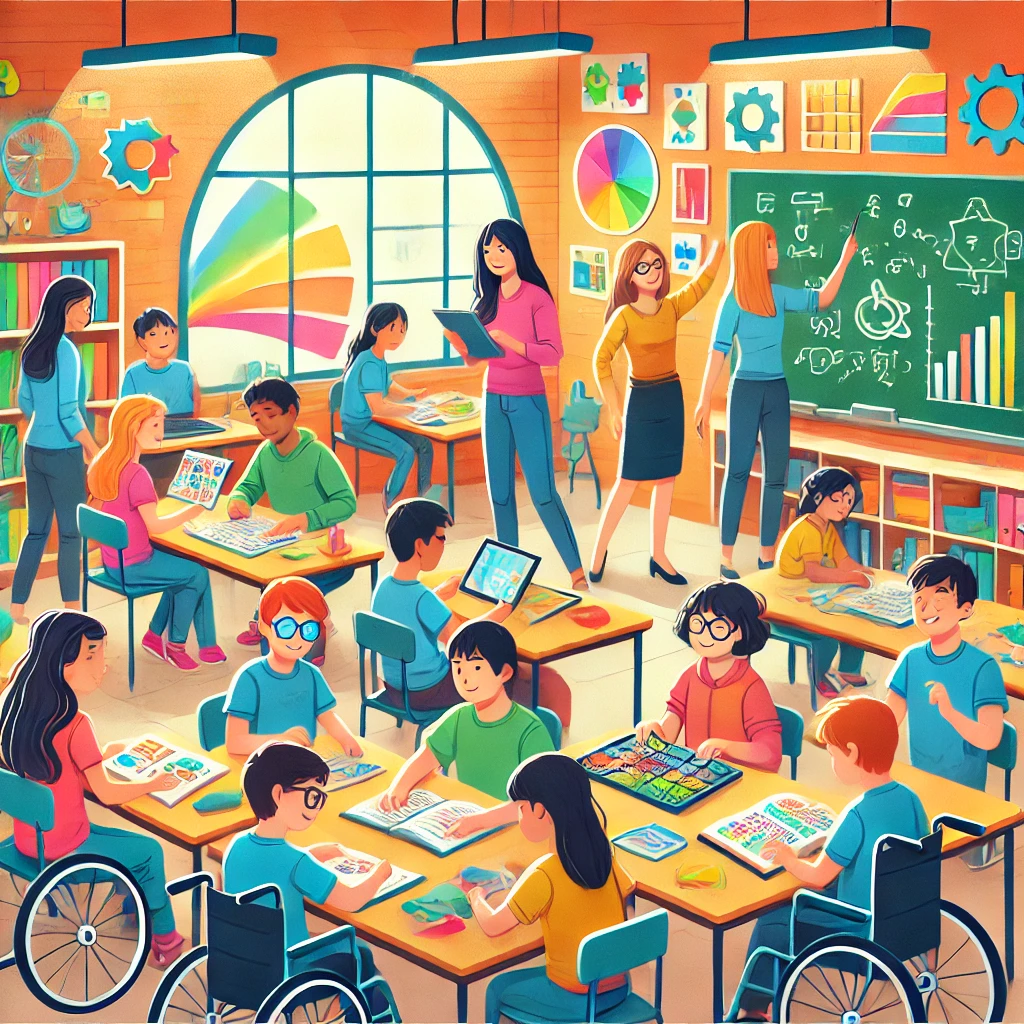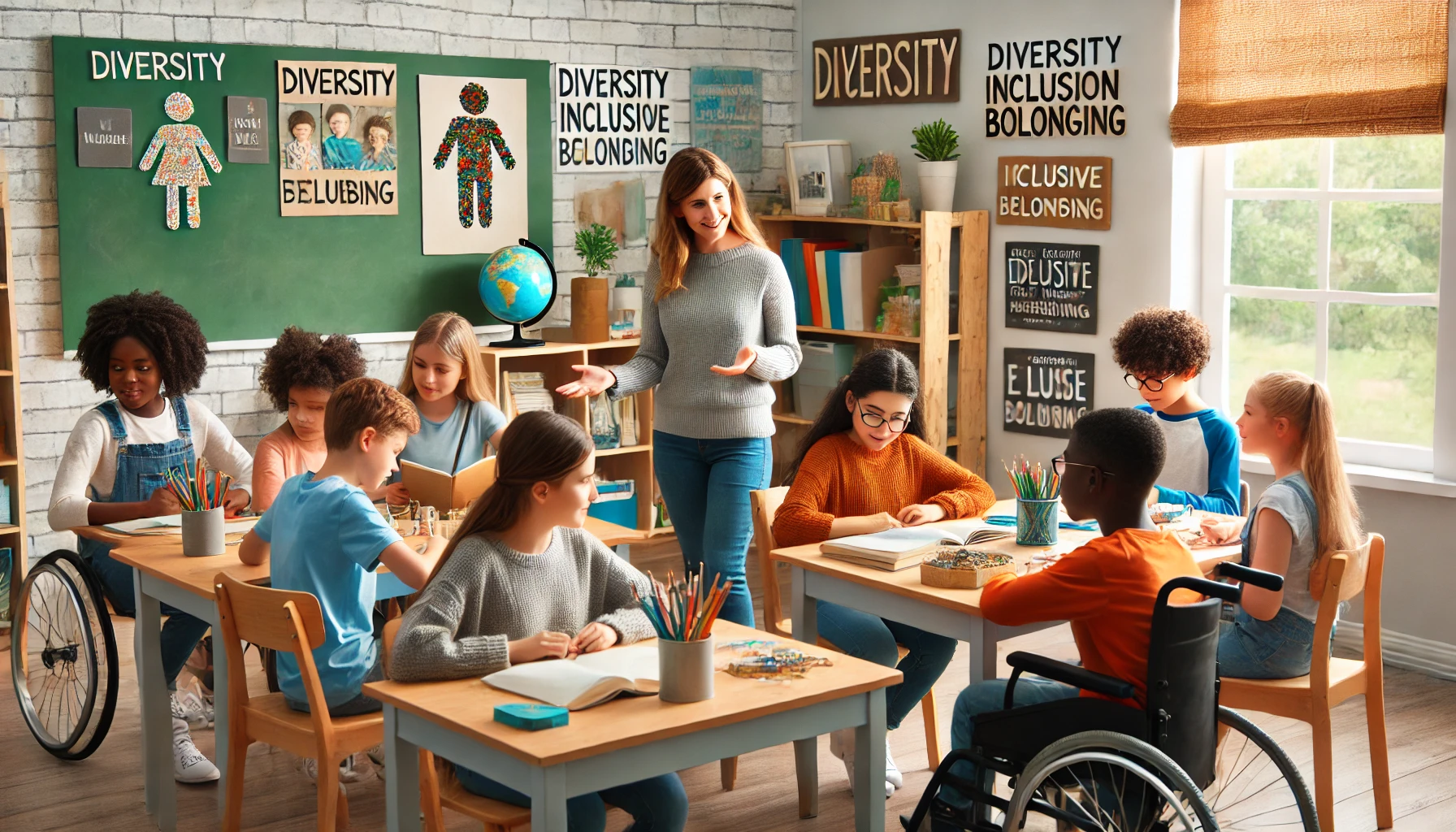Fostering Classroom Friendliness
In schools, making everyone feel included is super important so that each kid, even those with special needs, gets a fair shot at learning. This bit talks about what inclusive education really means and why classrooms like this are a win-win for everyone.
Understanding Inclusive Education
So, inclusive education is basically the idea that every kid, no matter how they learn, should have the chance to sit in the same classroom and have access to the same stuff as everyone else. It’s all about being fair and square right from the start. It’s about shaking things up – like ditching old-fashioned thinking and making sure every student feels involved and supported in their learning space.
Benefits of Inclusive Classrooms
Lots of research shows that inclusive classrooms are beneficial for all kids, not just those with disabilities. To illustrate this, a study from back in 2001 showed that nearly half of the students with disabilities in regular classrooms got better at math. Meanwhile, only a third improved in separated classes. This highlights how being part of a regular class can boost learning and help everyone get along better.
The idea of Universal Design for Learning (UDL) is super cool for helping make classrooms inclusive. It’s like having a bunch of different ways to teach and assess so that everyone stays on track, no matter their learning style. It’s a game-changer for keeping kids engaged and giving them just what they need to succeed.
But it’s not just about getting better grades. Inclusive classrooms can actually help kids grow socially and emotionally. Studies show that children in such settings are more likely to show empathy to their classmates, and they often have less worry and sadness.
Teachers, parents, and anyone who looks after kids with special needs have a huge role in helping make schools friendly and accommodating. When everyone pitches in, these classrooms transform into places that feel like home for every student, helping them grow and feel like they belong.
Implementing Universal Design for Learning (UDL)
Tackling education that embraces everyone’s unique quirks and learning needs, Universal Design for Learning (UDL) is a game-changer. It’s about setting up classrooms so every student feels like they belong, triggering teachers to shake up their techniques for the better.
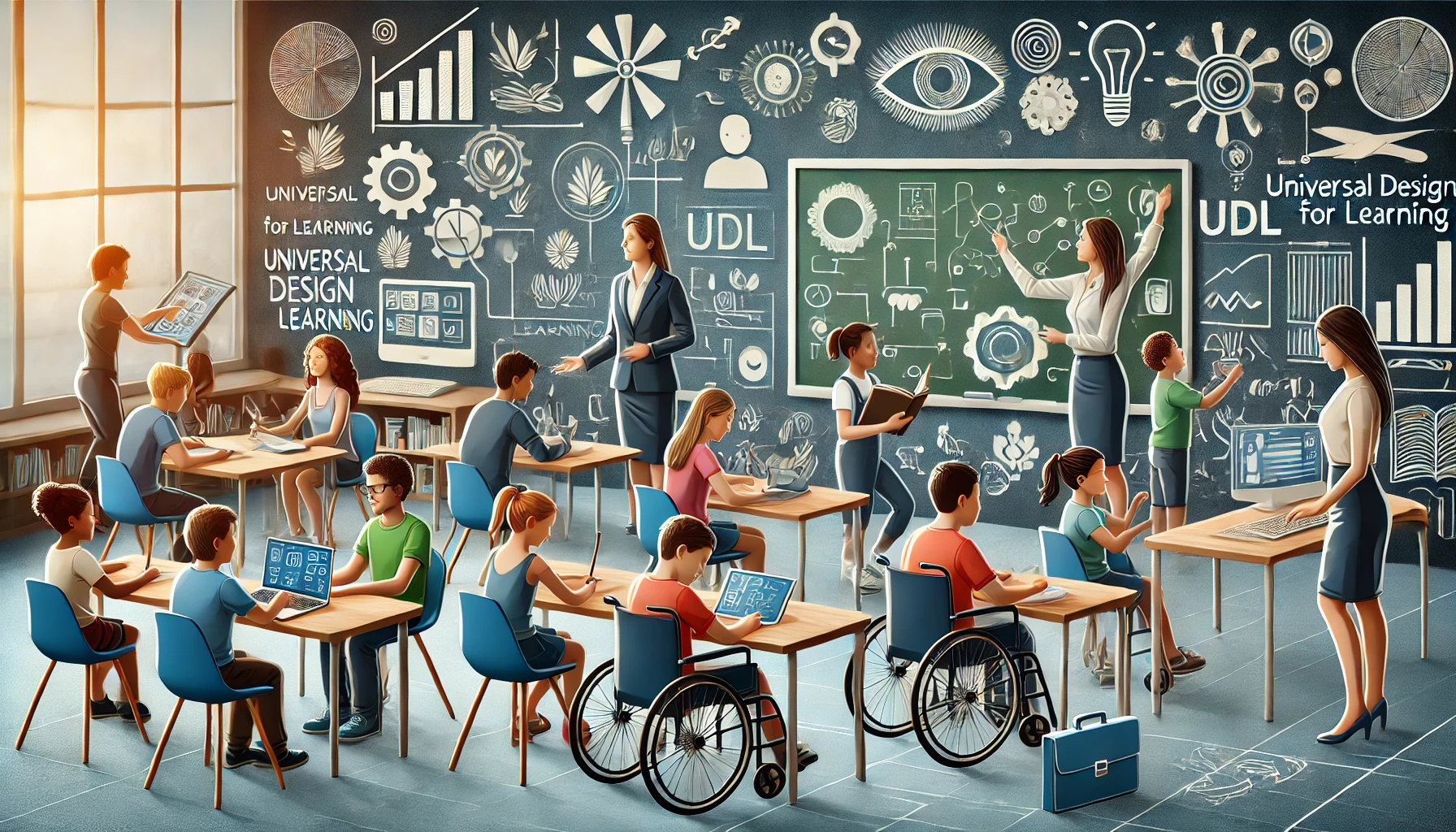
Principles of Universal Design for Learning
So, what’s the deal with Universal Design for Learning (UDL)? Think of it like a Swiss Army knife for teachers. This method focuses on making school life adaptable for all, not just one-size-fits-all. The University of San Diego talks about how UDL is kind of like a recipe, showing how to mix up lesson plans, teaching strategies, and testing in a way that fits everyone, not just the usual suspects.
This whole concept vibes really well with Howard Gardner’s Theory of Multiple Intelligences. Gardner figured out that smart ain’t just one thing—it’s a bag full of different goodies. UDL works in the same groove, hitting up different learning styles and giving every kiddo their moment to shine based on what they’re already good at.
Application of UDL in the Classroom
Bringing UDL into the classroom doesn’t mean tossing out the old and in with the new—it’s more about remixing the current playlist to keep everyone jamming. Teachers need to start with what their students already know, answer their burning questions, and mix up their teaching styles to vibe with each learner’s groove (shoutout to Edutopia).
To pull this off, educators use different ways to show info, get students hyped, and let them express what they’ve learned. By mixing it up with various learning tools, giving students choices in how they show off their knowledge, and cranking up the supportive vibes in the classroom, teachers boost students from all backgrounds to strut their stuff and succeed.
Research from those data-brainers over at the National Center for Education Statistics (NCES) shows kids in these inclusive classrooms are kinder and more chilled out. They’re less likely to be anxious or down in the dumps. UDL’s magic also rubs off in the social department, turning classrooms into places where everyone feels like a big deal.
When lessons sprinkle in tales and lessons from all walks of life, teachers become the unsung heroes. They’re the ones helping kids see the big picture, tuning them into tough topics like privilege and justice. UDL isn’t just setting kids up to score in the diverse, connected universe we call home; it’s prepping them to rock it.
Strategies for Inclusive Teaching
Making sure all students have a fair shot in their educational journey is what inclusive teaching is all about. It’s not just about ticking boxes for diverse needs, but really giving every learner the chance to succeed in their own way. Here are two strategies that can make all the difference: letting students have a say in how they get involved and providing everyone with the necessary support.
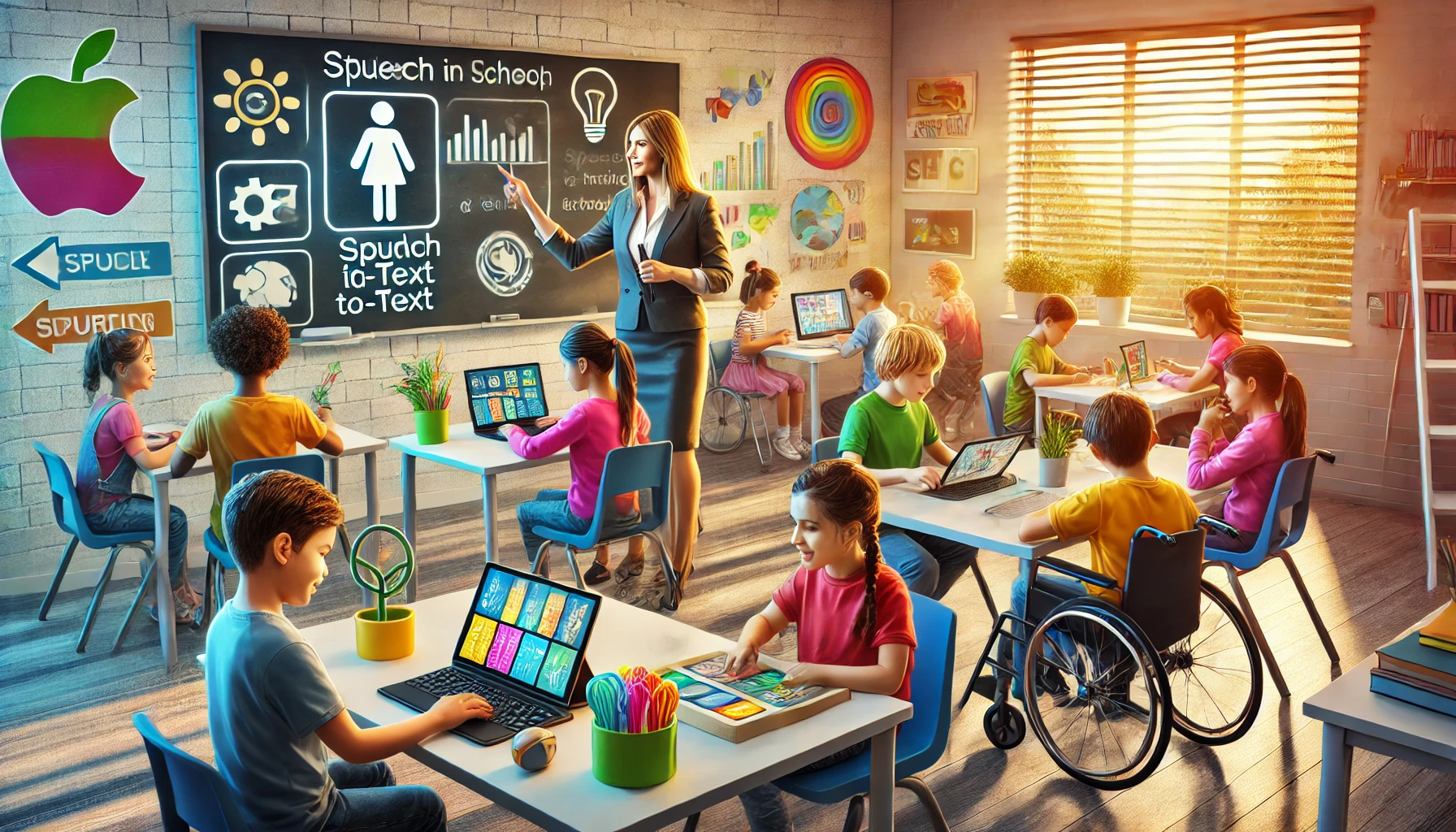
Providing Choices for Student Engagement
A big part of inclusive teaching is letting students pick how they engage with what they’re learning. When teachers offer different ways to interact with the material, students feel more in control of their own learning. It’s like being at a buffet where you can choose what works best for you—everyone gets a chance to shine by playing to their strengths and preferences.
Offering Accommodations for All Learners
Inclusive teaching isn’t just about catering to those with known challenges. By making accommodations, typically reserved for those with Individualized Education Programs (IEP) or 504 plans, available to everybody, teachers open up the classroom to be more accessible for everyone. Tools like text readers or voice-to-text apps are game-changers for lots of students, not just the ones with documented disabilities.
When teachers focus on engagement choices and making accommodations available to all, they’re crafting a place where every student can do more than just get by—they can really thrive. It’s about making sure everyone’s got the tools they need to learn alongside their buddies, creating a classroom vibe that’s all about fairness and inclusion. So, every student can reach for their personal best, making education a truly shared adventure.
Cultivating Student-Centered Approaches
Creating a classroom where every kiddo feels welcome and able to thrive is a goal worth chasing. Making things about the students, rather than just the lessons, can turn that dream into reality. When we let students get behind the wheel and guide their own learning, we not only make things interesting but give them an environment that boosts not just their brainpower but their self-confidence too.

Empowering Students in Goal-Setting
Inviting students to set their own learning goals is pretty much the backbone of a friendly and welcoming learning space. When students help decide what’s worth learning, they’re takin’ control of their education. This isn’t just about holding their attention—it’s about teaching them how to manage themselves and take responsibility. They become pros at figuring out what they need to do to learn best, skills that’ll serve them well no matter what winding road they follow in life.
By letting students set goals that matter to them and suit their abilities, teachers can better adapt lessons to hit home. This way, students work towards mile markers that matter to them, amping up their involvement and making them feel more tied to learning.
Encouraging Personalized Learning
Making learning personal is key to respecting the different ways students learn. To do this, teachers need to get a handle on what drives the students and how they learn best. Think of it like fitting the puzzle pieces together by mixing student strengths with lesson plans. It makes for better understanding and remembering of what they learn (Drexel University School of Education).
When teachers offer up a smorgasbord of activities, students get to pick the ones that fit them—it’s learning served their way. This isn’t just about squeezing into one learning style mold. It’s about empowering students with choices and teaching them to steer their own learning ship.
By putting student-centered methods front and center—be it through helping them map their own goals or by personalizing their learning experience—teachers foster a hearty, inclusive atmosphere. Here, every student gets the chance to shine, feel respected, and gear up to achieve their best. These tactics go beyond test scores; they help nurture students’ self-worth and overall happiness, building a school setting that’s all about lifting each other up and looking out for one another.
Enhancing Learning Styles
In the art of teaching, understanding how each student learns is key to helping them succeed. We have to consider how our kiddos take in and process information to build lessons that work for everyone.
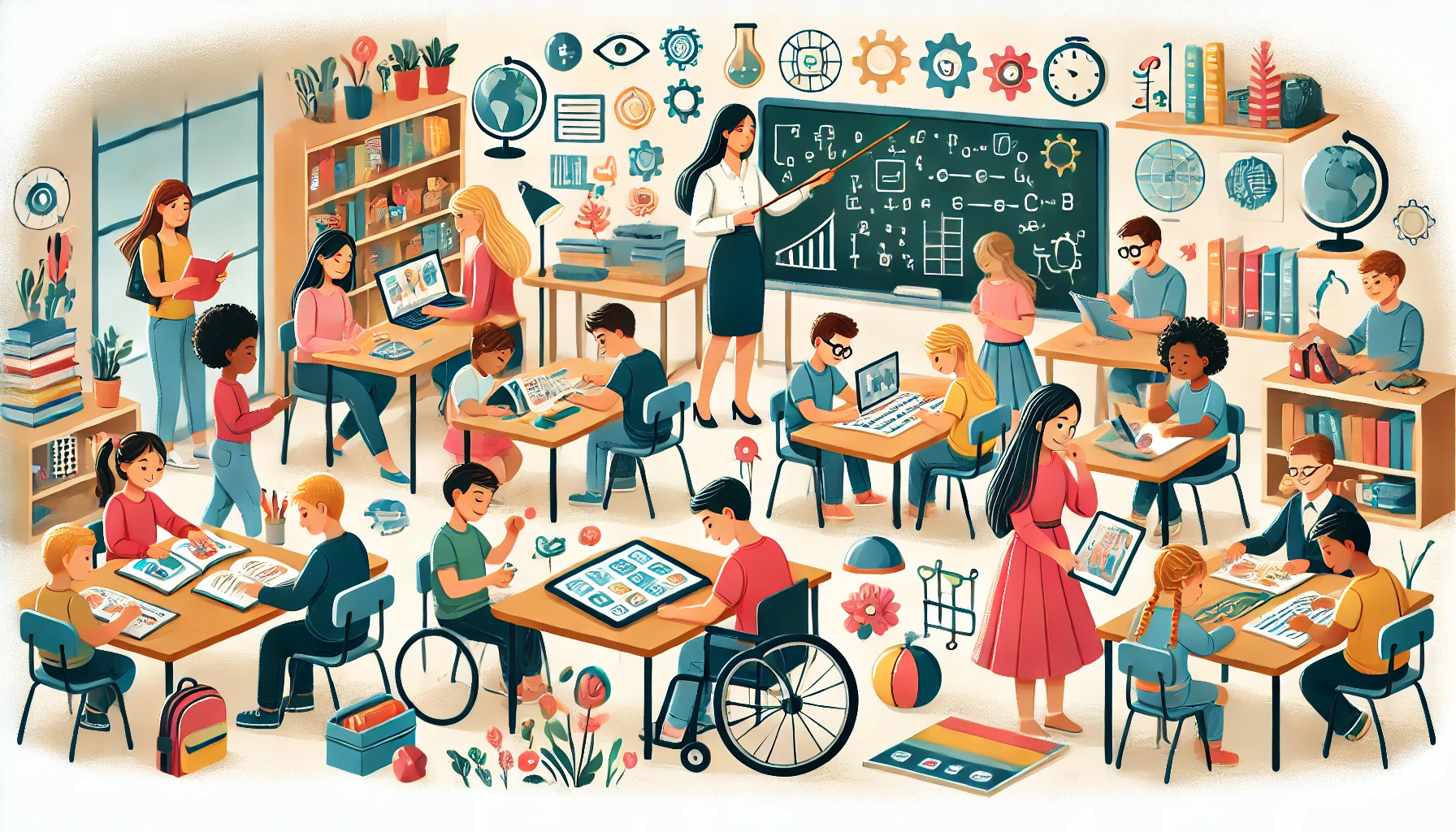
Adapting to Varied Learning Styles
Teachers know that every student isn’t cut from the same cloth. Some thrive on visual cues, others on sounds, and some need to move around to learn best. By shaking things up and mixing in different approaches, teachers can make a classroom that clicks with every student. Letting students try out different ways to learn helps them get a grip on the big ideas (University of San Diego).
Inclusive education tosses the cookie-cutter method, opting instead for a plan that meets every student’s needs. It pushes teachers to give out goals and info through different channels to reach all kinds of learners. This way, not only does it boost academic skills, but it also makes students feel they belong and can take charge of their learning.
Importance of Diverse Teaching Methods
Bringing in diverse teaching methods in education mixes things up to make learning exciting and fair for every kid. Using visuals, hands-on stuff, team chats, and projects, teachers cater to all types of learners in the classroom.
Building an inclusive learning space tears down walls that keep some kids from getting the same shot at learning. It urges teachers to try out new tricks that grab all students’ attention. Studies show that kids in these inclusive setups are more understanding of each other and feel less anxious or down, proving that thoughtful teaching can boost social and mental health (College of Education – University of Illinois Urbana-Champaign).
By welcoming different teaching styles and ready to switch things up for varied learning types, teachers make classrooms where all students shine. Inclusive education goes beyond just hitting the books; it’s about giving students the tools to love learning and feel confident and capable.
Promoting Inclusion
Creating an environment where every student feels like they belong is crucial to inclusive education. It comes down to teamwork and understanding what makes inclusive learning valuable for everybody involved—students, teachers, and even parents.
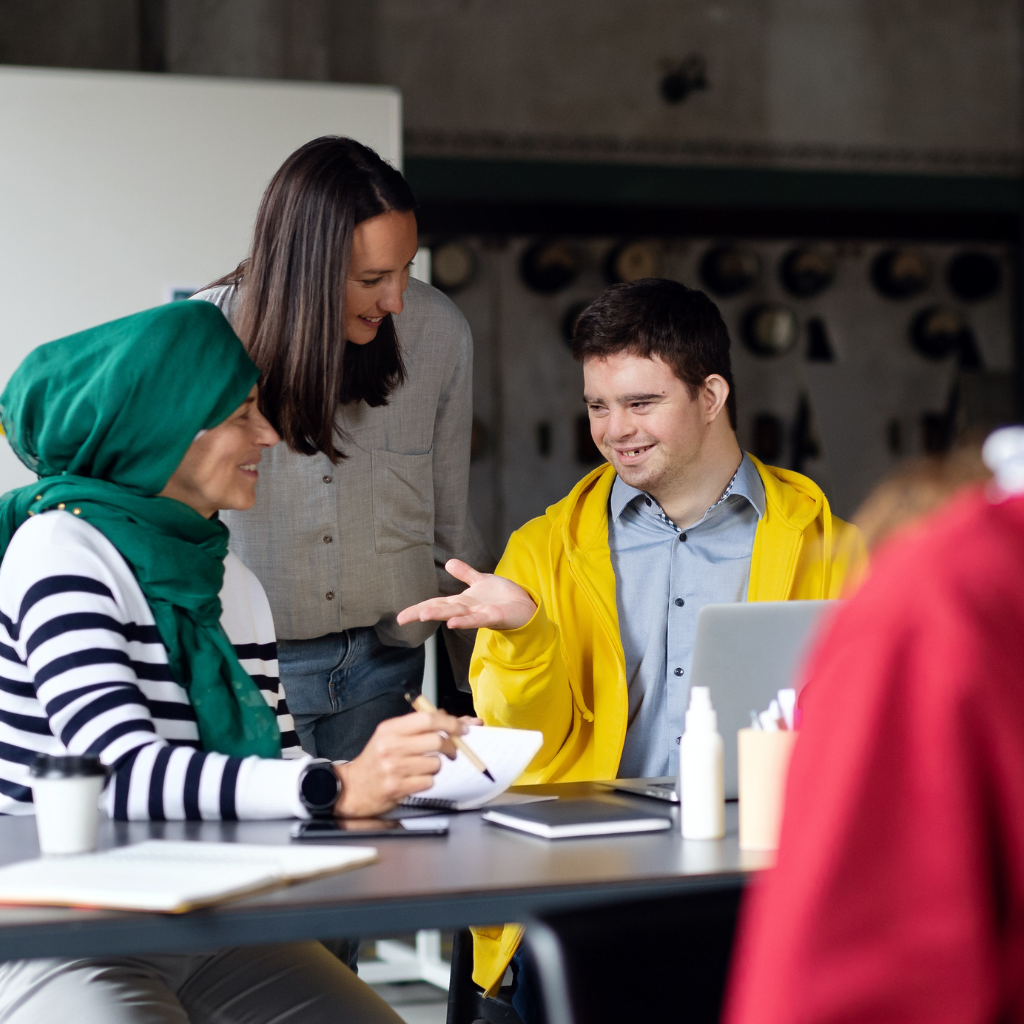
Teamwork in Teaching
Teachers working together as a team in schools is a game-changer. By pooling resources and know-how, educators can meet the needs of all students more effectively (Drexel University School of Education). When teachers and support staff put their heads together, students get more individual attention and support tailored just for them, making learning a hit for everyone.
When teachers join forces to plan lessons that are open to everyone, adjust teaching methods, or tackle different learning styles, students get the help they need to flourish both in and out of the classroom. Having open lines of communication and making decisions together helps educators forge a well-rounded teaching approach that supports all kids, whether they have disabilities or not.
Good Things About Inclusive Education
Inclusive education is a win-win, benefiting not just kids with special needs but the whole school crowd—teachers, parents, and staff included. Research shows that studying in mixed-ability classes offers loads of perks for kids with disabilities and their classmates too.
For example, students with disabilities do better in math when learning side-by-side with peers in a regular classroom, compared to separate, specialized classes. And here’s the kicker: students without disabilities in those same classrooms also tend to perform better in math. This setup benefits everyone’s learning journey (University of San Diego).
On top of learning more, an inclusive classroom helps students feel like they belong. When kids feel respected and part of the group, they tend to take part more, skip class less, and find school a more positive place (Drexel University School of Education).
By getting behind teamwork in teaching and acknowledging the gifts of inclusive education, schools can create a space where every student can grow. It’s about building a spot for learning that lifts everyone up, no matter the differences.


